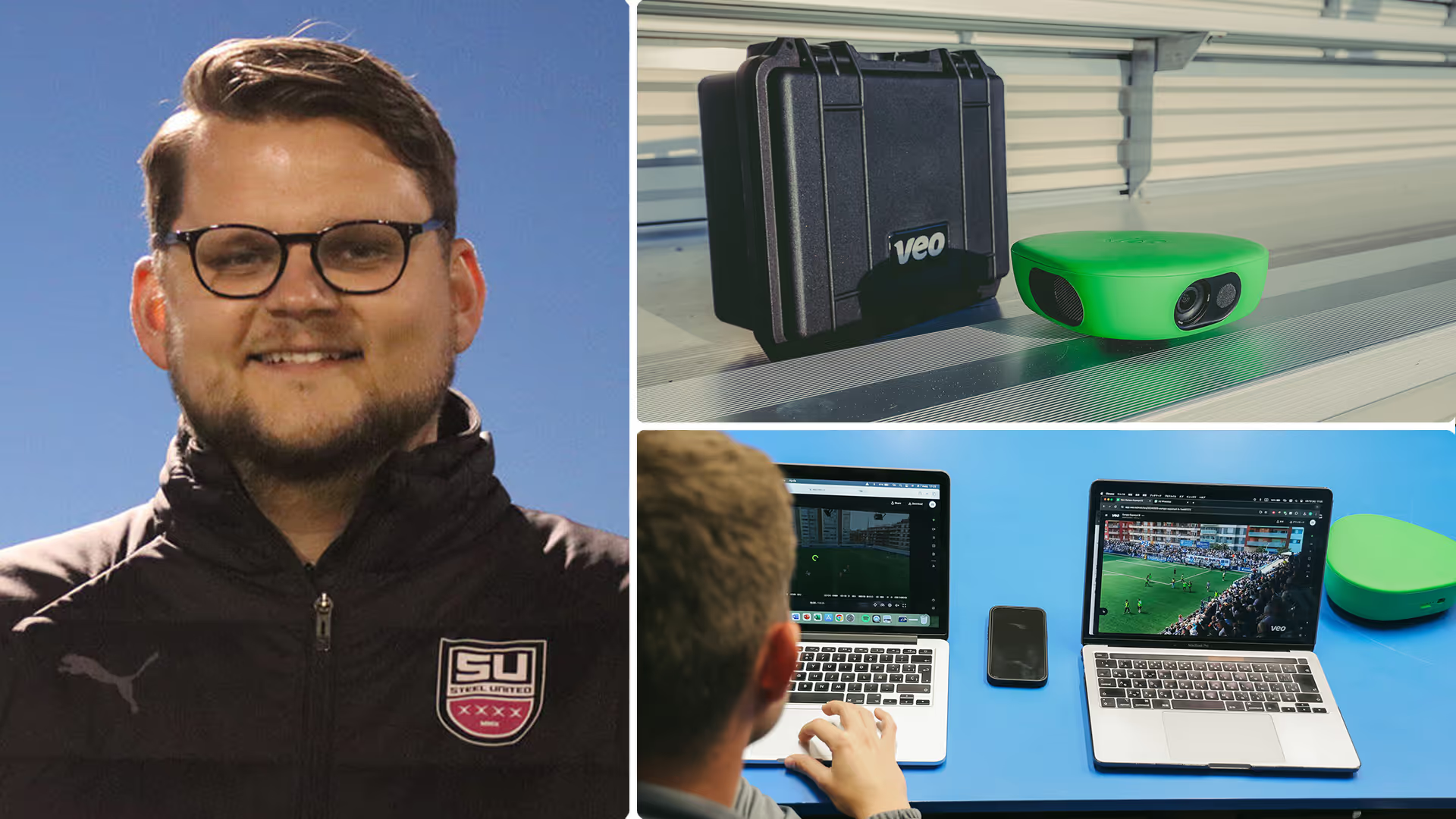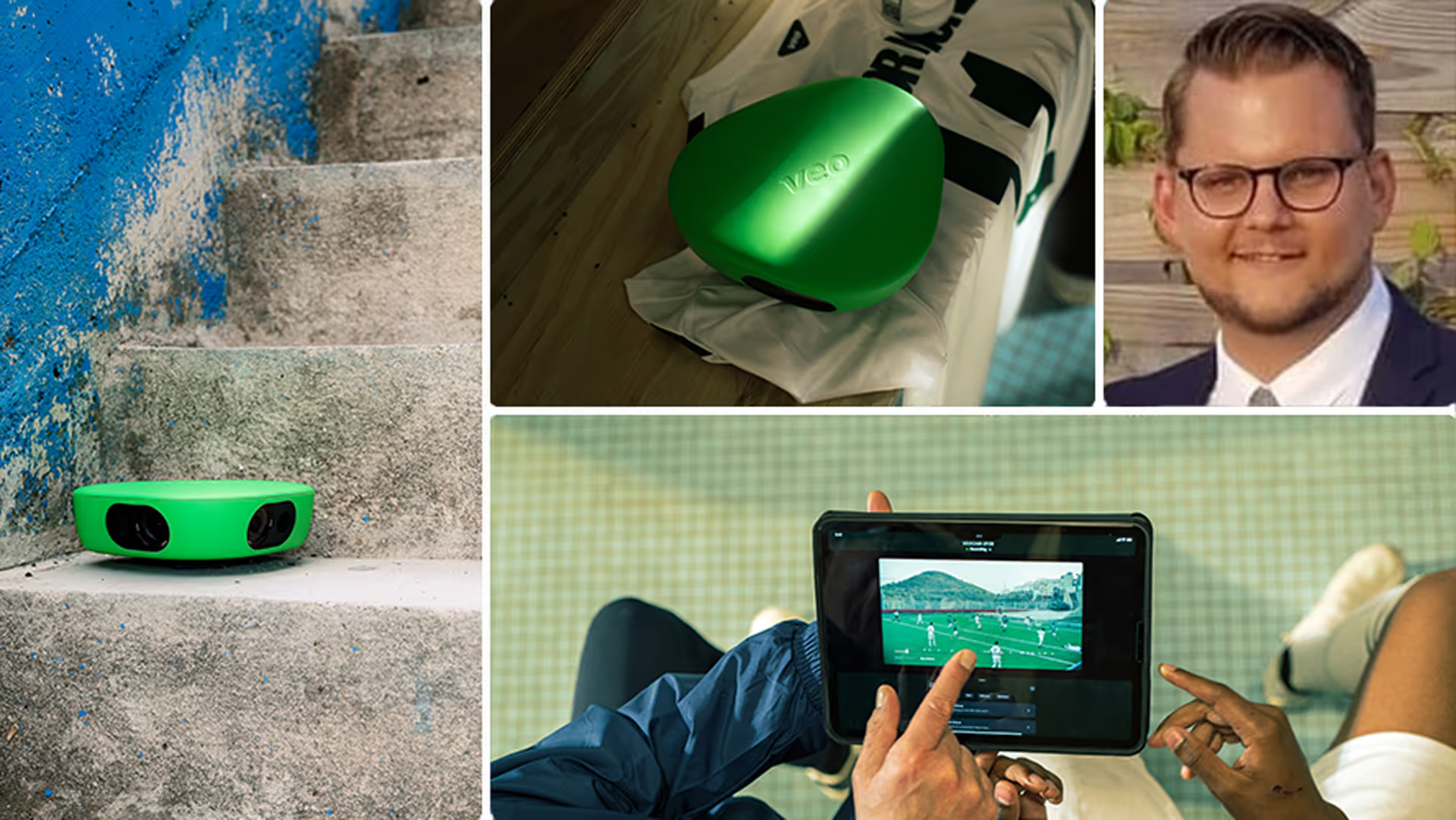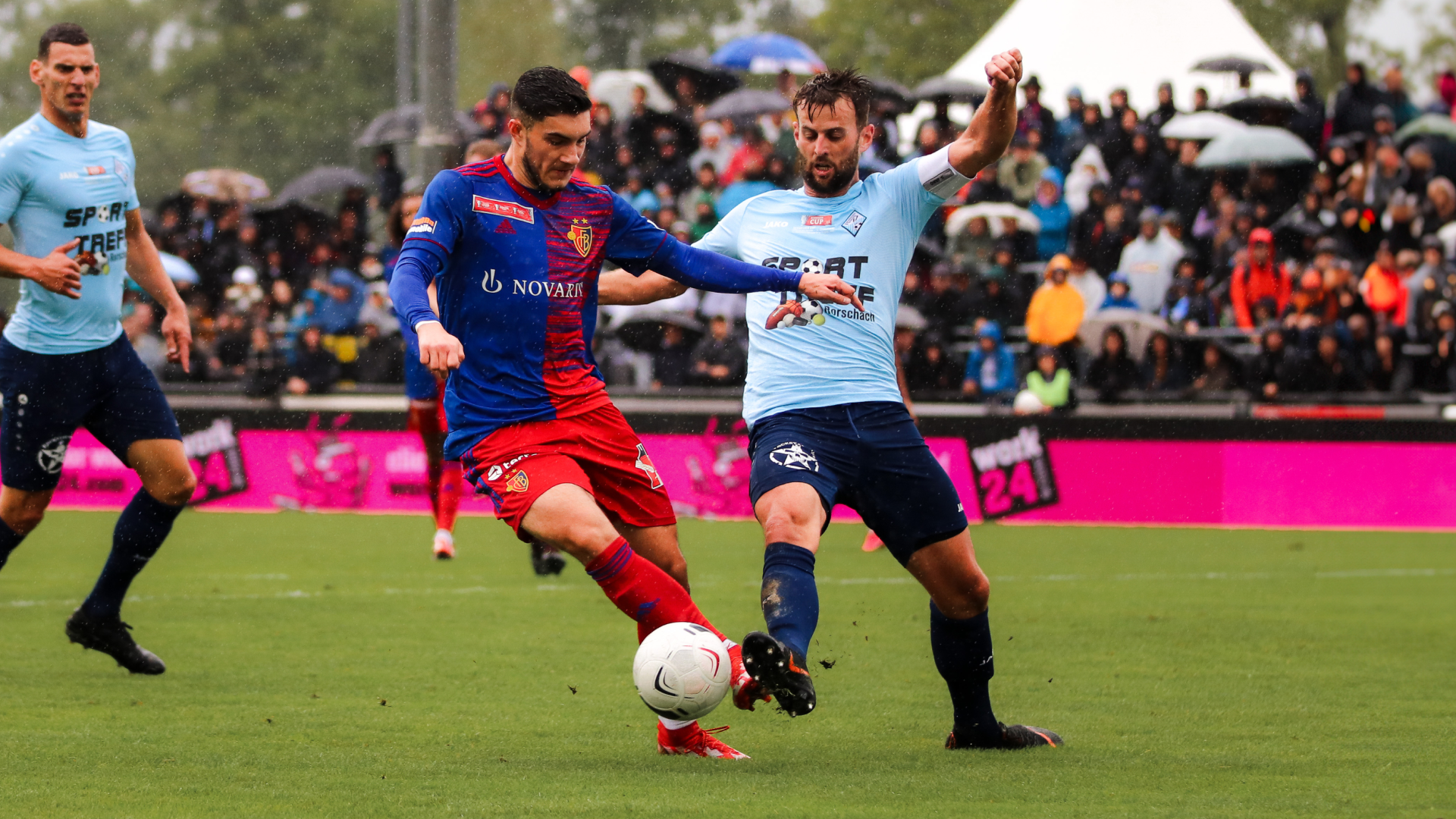28 cameras, 10 locations, one strategy: Steel United's centralized approach
Magnus Holt

While many multi-location soccer organizations struggle with inconsistent video implementation across their sites, Steel United has built a centralized system that serves 2,500 players across 10 states. Their strategic approach to partnership negotiation and systematic allocation offers a blueprint for clubs looking to scale intelligently.
Adam Corlett manages video technology for one of America's most geographically diverse youth soccer organizations. As Vice President of Soccer for Steel United, he oversees more than 28 Veo cameras serving approximately 150 teams across locations from Massachusetts to California, from Texas to Washington state.
Steel United isn't a traditional franchise operation. Founded as a multi-state soccer organization, they maintain centralized standards while allowing regional flexibility. Their model focuses on developing players through consistent coaching methodologies and shared resources, creating what they describe as something bigger for clubs that want to be part of a national network while maintaining local identity.
Their approach demonstrates how long-term and deliberate thinking about technology partnerships can create advantages that individual locations couldn’t achieve alone.
The power of centralized partnerships
The decision to negotiate collectively rather than allowing individual locations to purchase cameras separately has become a cornerstone of Steel United's scaling strategy. The operational advantages of managing everything through one relationship become immediately apparent when compared to coordinating multiple vendor contracts across different states.
"We set up an agreement with Veo from a national standpoint," Corlett explains. "We wanted to make sure that if we have 28 cameras, for example, when we have our two-year agreement that we have, we know that we'll be able to access some advantages on the subscriptions, maybe some discounts on new cameras, whatever it may be."
Beyond financial benefits, centralized purchasing creates administrative simplicity that individual locations could never achieve. Individual locations buying small quantities would sacrifice operational efficiency while missing opportunities for enhanced support that comes with larger commitments.
"If it's individual regions buying two or three cameras here and two or three cameras there, they're not going to get the same level of advantages," Corlett notes. This calculated thinking extends beyond immediate cost savings to long-term relationship building with technology partners.
The centralized approach also aligns with Steel United's existing financial structure. All regional expenses flow through their national office, making individual technology contracts unnecessarily complex. "Our billing and our payments all come from a centralized location," Corlett explains. "It didn't really make sense for each branch to be controlling their own individual accounts when everything was going to be paid by the national office anyway."
This integration of technology partnerships with existing operational systems creates efficiency that compounds over time. Rather than managing multiple vendor relationships across different locations, Steel United maintains one strategic partnership that serves their entire organization.
Systematic allocation and growth planning
Steel United's camera distribution follows a clear formula that removes guesswork from expansion decisions. Adam Corlett uses an almost fixed ratio as his baseline for allocation recommendations, providing a concrete framework that can be immediately applied.
"I typically go off of an 8 to 10 team per camera scenario," he explains. "So if you're a club that has 20 teams in it, then yeah, you should probably be having at least two cameras and potentially looking to get in a third one. If you have less than ten, it's like, what can you get away with one camera for now?"
This methodical approach transforms annual budgeting from arbitrary requests into data-driven planning. Regional directors must justify camera needs based on objective criteria rather than subjective preferences. The process creates accountability while ensuring resources align with actual capacity.

The budgeting cycle itself reflects this thinking. "Every year we go through a budgeting process where we map out the planned expenses for the region based on how many teams we think we're going to have, how many players we're going to have in the region," Corlett says. The forward-looking approach allows Steel United to anticipate technology needs rather than react to immediate pressures.
Priority allocation considers program demographics alongside team counts. "If a branch has a lot of high school age teams as well or older U17 teams, that's definitely a club that we would prioritize Veos for," Corlett notes. This recognizes that older players have the most immediate need for game footage to support college recruitment efforts.
The systematic approach also guides equipment lifecycle management. Newer cameras flow to locations with expanded programs while older units serve academy-level teams, ensuring every level benefits from video analysis even when budget constraints prevent uniform distribution of the latest equipment.
Beyond game footage: Maximizing camera value
Steel United's comprehensive usage strategy transforms cameras from game recording devices into multi-purpose development tools. This broader application justifies larger investments while creating value that extends beyond match analysis.
The curriculum development represents one of Steel United's most innovative applications. The organization creates standardized training sessions that all coaches across their network implement, with video documentation ensuring consistent execution regardless of location. "We do record all of our curriculum now," Corlett explains. "We send out one curriculum session a week to all of our coaches that every coach across the country has to use. All sessions now also have a video attachment to it as well."
So, rather than relying solely on written instructions, coaches receive visual demonstrations that show exactly how each drill should look. The consistency this creates across 10 locations would be impossible without video.
Professional development extends the educational value further. Steel United encourages coach developers to record sessions when providing feedback to regional coaching staff. "That allows the coaches to see some of the things that they were doing when they get their written feedback as well," Corlett notes.
Social media and marketing applications add another dimension of value. The organization maintains a monthly top ten plays feature that showcases highlights from across their network. Individual regions contribute goals and saves that demonstrate the quality of play throughout the Steel United system.
College recruitment support addresses one of the most immediate concerns for competitive youth soccer families. "All the teams being able to pull video footage and compile highlights that they can then send on to college coaches" has become an essential service that Steel United provides to players and families across all locations.
The breadth of applications helps justify camera investments to regional directors who might otherwise question the expense. When cameras serve curriculum development, coach education, marketing, and recruitment in addition to game analysis, the cost-per-use calculation becomes compelling.
Managing scale through trusted delegation
Steel United's success with 28 cameras across 10 locations stems from a delegation model that maintains central standards while empowering regional execution. This balance requires clear role definitions and consistent knowledge transfer processes, and it demands that administrative responsibilities flow naturally through the organizational structure.
Adam Corlett works alongside Ian Hughes, Steel United's VP of Player and Staff Development, to oversee camera operations from the national level. "Ian and I both oversee it from a national standpoint. We have access to every clubhouse," Corlett explains. "We then make sure that each of the directors and any of the assistant directors in those regions has admin access, and then they can go in and set up the teams in Veo’s platform."
This tiered access model creates accountability without micromanagement. Regional directors handle day-to-day operations while national leadership maintains oversight capability. The system prevents administrative bottlenecks that could develop if all camera team management flowed through a single person.
Knowledge transfer relies heavily on peer-to-peer learning rather than formal training programs. Coaches who have used cameras extensively can mentor newcomers, creating a culture where video analysis becomes standard practice rather than special technology.
Regional directors appreciate the delegation model because it removes camera logistics from their primary coaching responsibilities. "They should be focusing on their day-to-day roles of coaching and their program, then I can take concerns of camera logistics off of them and help them navigate that even from afar," Corlett explains.
This division of responsibilities allows specialists to focus on their areas of expertise. Regional directors excel at coaching and program development while national leadership handles technology coordination and vendor relationships.
Growth-ready systems
Steel United's continued expansion requires systems that can accommodate new locations without disrupting existing operations. Their experience with recent acquisitions demonstrates how proper planning facilitates smooth integration.
The onboarding process begins long before new locations join the organization. "Before we bring any new club on board, we'll meet them multiple times. We'll go see them. We'll meet them in person. We'll watch them run sessions, we'll speak to families," Corlett explains. This comprehensive vetting ensures cultural fit before technology integration begins.
Transparency about expectations prevents conflicts during transition periods. Steel United provides a document called "Why Steel United" that outlines both benefits and requirements for prospective locations. "Veo is a part of that document in terms of these are the things that are the benefits for you coming on board. These are the things that you can expect. These are the things that we have in the partnerships we have that you will be expected to implement," he says.
This upfront communication addresses potential resistance before it develops. Locations that have used different platforms understand the transition requirements and can plan accordingly. Using the same video platform everywhere gives practical advantages that go beyond administrative simplicity. Uniform implementation gives opportunities for cross-location collaboration that wouldn't exist with fragmented systems. Regions can share footage, compare development approaches, and learn from each other's successes.
The club’s regular meetings bring directors from all locations together, creating opportunities for knowledge sharing that extends beyond formal training. "At least once every two weeks, we have a teams directors meeting where every team's director from around the country is on the meeting," Corlett explains.
This collaborative approach ensures new locations don't feel isolated during their transition period. Experienced directors can share practical insights about camera usage, administrative processes, and implementation challenges.
Advice for multi-location organizations
When asked for guidance to other organizations considering centralized video management, Corlett emphasizes the importance of inclusive decision-making processes that build buy-in rather than mandate compliance.
"My biggest advice would probably be making sure that you are transparent and communicative with those regions or with the clubs that you have around the country, and making sure that they're a part of the process," he says. "Because I think when they feel included, they feel bought in, they feel like they're a part of it."
The contrast between collaborative implementation and top-down mandates significantly affects adoption success. "Whenever you get something and you basically impose it on somebody and say, ‘you have to use this because I tell you you have to use it,’ you’ll always get a fight back," Corlett says.
When locations understand how centralized systems enable cross-regional collaboration, maintain consistent standards, and create negotiating advantages, resistance typically transforms into support.
"When it's a case of, ‘this is something that we've decided as a group makes sense because of the reasons that we've laid out: it's going to allow us to control standards, it's going to allow us to show consistency across the country, and it's going to allow us to share footage from one region to another,’ you get a lot more buy in. And if you can get the majority of people on and then they can see the benefits, it's just a lot easier because you're not fighting against the tide."
Steel United's experience demonstrates that successful scaling requires more than adding cameras to new locations. It demands thoughtful thinking about partnerships, systematic approaches to allocation, and leadership that builds consensus around shared benefits.
For organizations ready to move beyond small-scale video implementations, Steel United's model offers a proven framework that transforms technology from individual location amenities into organizational competitive advantages. The key lies not in the number of cameras deployed, but in the strategic thinking that makes comprehensive implementation possible.




